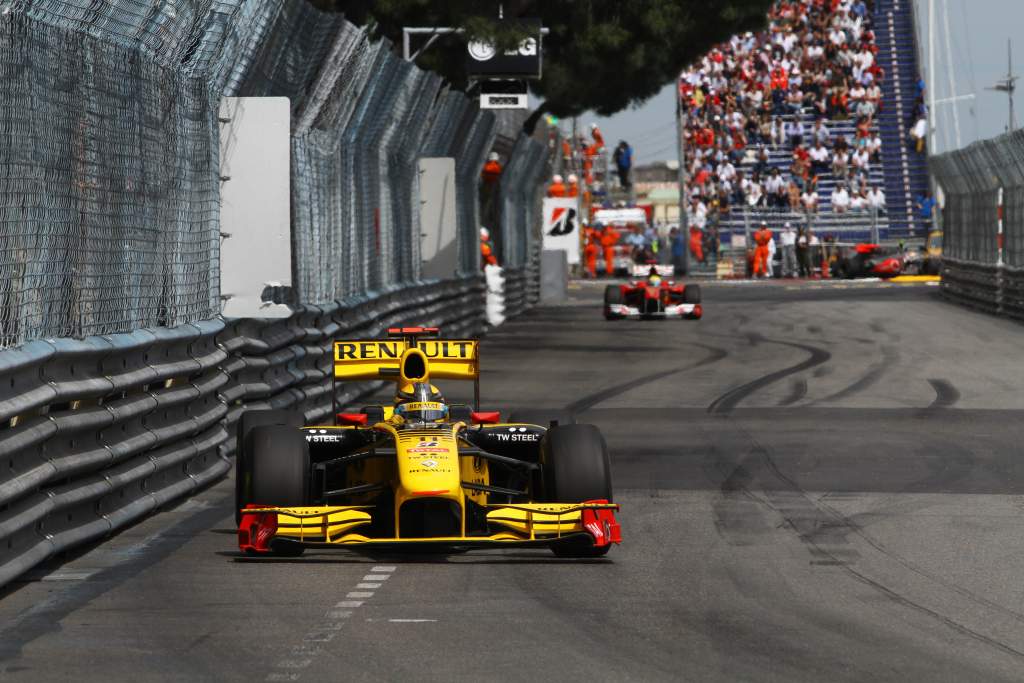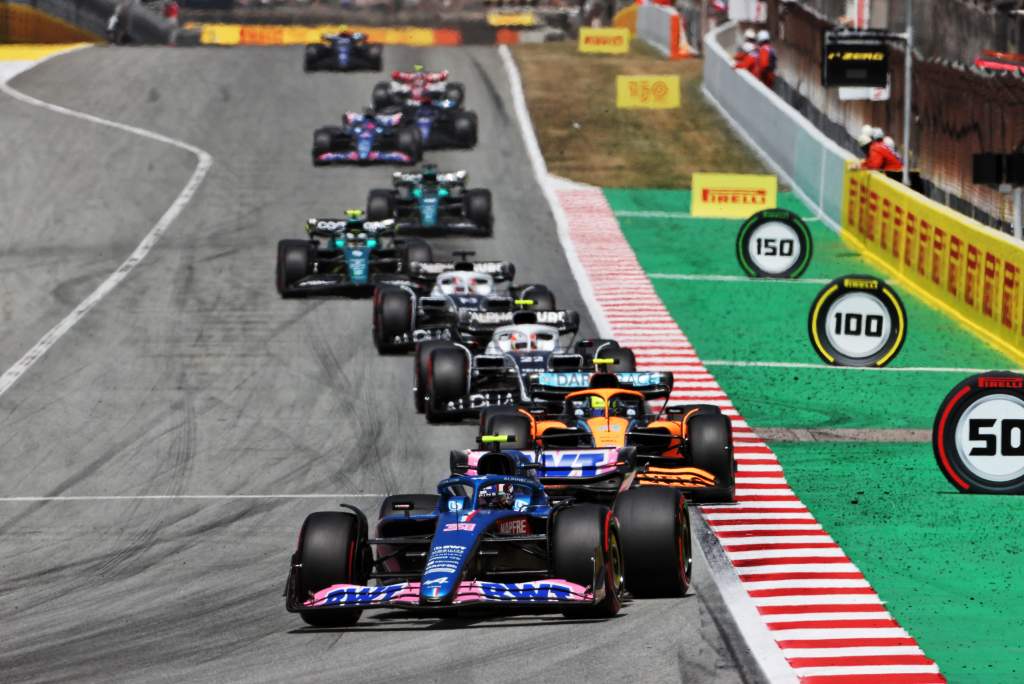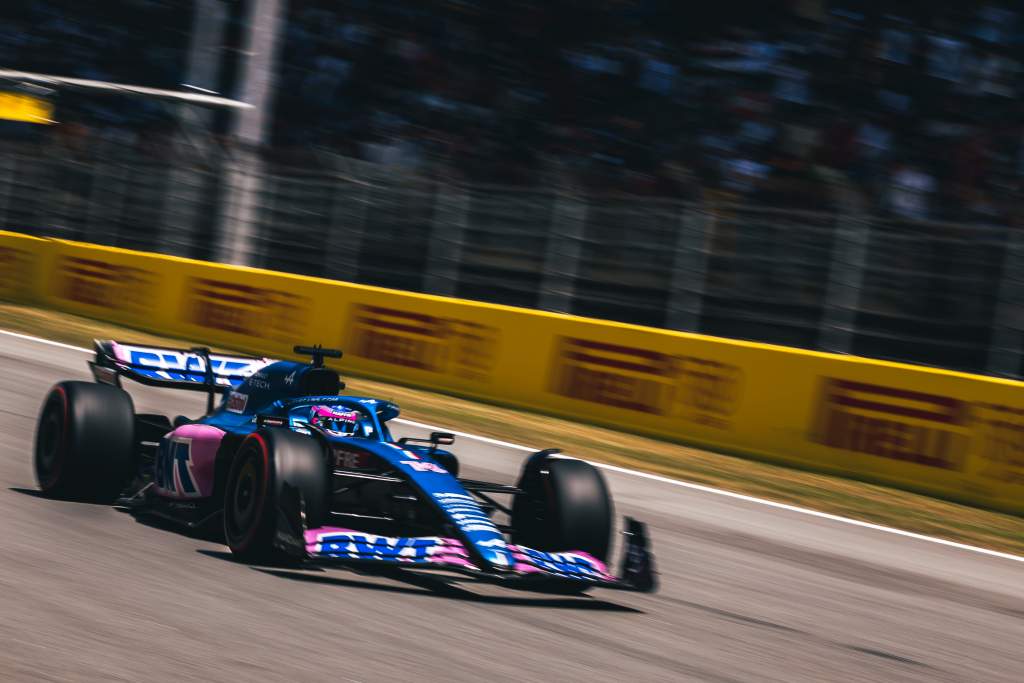While the Alpine brand may be in only its second season in Formula 1, the Enstone team that bears its name has plenty of history.
And in Monaco that history was pretty illustrious.
It’s a four-time winner, thanks to domination by Michael Schumacher in his Benetton title winning years in 1994/95, Jarno Trulli’s shock one-off 2004 triumph and a Fernando Alonso victory on the way to his 2006 championship.
Even in tougher years for Benetton/Renault, it was worth watching in Monaco. See Giancarlo Fisichella’s 1998 and 2000 podiums (and 10th on the grid in the uncompetitive 2001 car) and Robert Kubica’s front row and podium in 2010.
But its recent history has been unimpressive.
In the last 10 Monaco Grands Prix, stretching back to 2011, whether under the Renault, Lotus or Alpine name, a ‘Team Enstone’ car has failed to finish higher than eighth. Kubica’s 2010 third place was the last big result.

It’s a run the team will hope to end this year, buoyed by Esteban Ocon and Fernando Alonso’s strong races in last weekend’s Spanish Grand Prix.
While Alpine wasn’t among the teams deploying the biggest upgrade packages in Spain, it did have a batch of new parts. In addition to a higher-downforce rear wing, Alpine modified the front wing endplates, the inner fairings on its rear brake ducts and the winglets on the rear brake drums. That might not sound like much, but that rear corner of the car, given the way it interacts with the floor/diffuser, is a crucial area of development.
Qualifying in Spain went badly, as poor communication led to Alonso’s exit in Q1 and Ocon struggled with the tyres in what he called a “messy” session and lined up 12th.
But the race was more representative, with Ocon taking seventh after showing good pace throughout and Alonso ninth despite starting at the back of the grid after a strategic power unit change. This suggested the Alpine upgrade was working well.
“There were differences between Friday and Saturday with not much difference in ambient temperature and track temperature and not a lot of change, but we changed a lot of things on the car,” said team principal Otmar Szafnauer after the Spanish GP. “So we’ve got some understanding to do.
“Once we understand that then hopefully it won’t happen again. But we had a good racecar.”

The Alpine has been firmly in F1’s midfield morass during 2022. On average, it has the sixth fastest car and is in a tight group stretching from fourth-quickest Alfa Romeo to eight-fastest AlphaTauri.
Its pace in Spain suggested it potentially had the fifth-quickest car, albeit not quite at the level of the Alfa Romeo. But although Alonso described his ninth place from the back as feeling “like a victory” given he felt he’d lost hope of points with the tail-end start, Szafnauer revealed the team was always confident about its race pace.
This follows the team’s recent efforts to ensure its Sunday pace is stronger, potentially sacrificing a little qualifying performance along the way.
Follow every Monaco Grand Prix session as it happens, get paddock insight and quiz our writers on The Race Live Hub – also featuring Mugello MotoGP and the Indy 500 this weekend
“When we went through all the different strategy models and permutations, if we did a good job and the race went our way, we were very close to where we finished,” said Szafnauer of Alonso’s race.
“So with the base pace of the car, knowing what tyres we were going to put on, I think we predicted nearly this finish – not quite, one lower. But we predicted Fernando in the points.
“It exceeded my expectations, but it did by a little bit. We were pleasantly surprised is the right way to say it.”

Alpine did encounter more porpoising than expected in Spain, although that didn’t appear to compromise its pace too much.
But looking ahead to this weekend’s Monaco Grand Prix, Szafnauer said hitting on the right set-up without hitting porpoising problems will be key.
“The bouncing, or the ride height, is highly correlated to downforce so nobody wants to lift the car because you lose load,” said Szafnauer when asked about the challenge of Monaco.
“So we’ll have some work to do both on Friday and in the simulator to see how low we can get the ride height without causing the porpoising.”
This gives Alpine reason for some cautious optimism heading into Monaco, although it remains one of F1’s most unpredictable teams in terms of form.
But it should at least have the chance to improve on its smattering of eighth, ninth and 10th places over the past decade or so, even if the glory days of winning or finishing on the podium will likely have to wait at least another year before they return.


